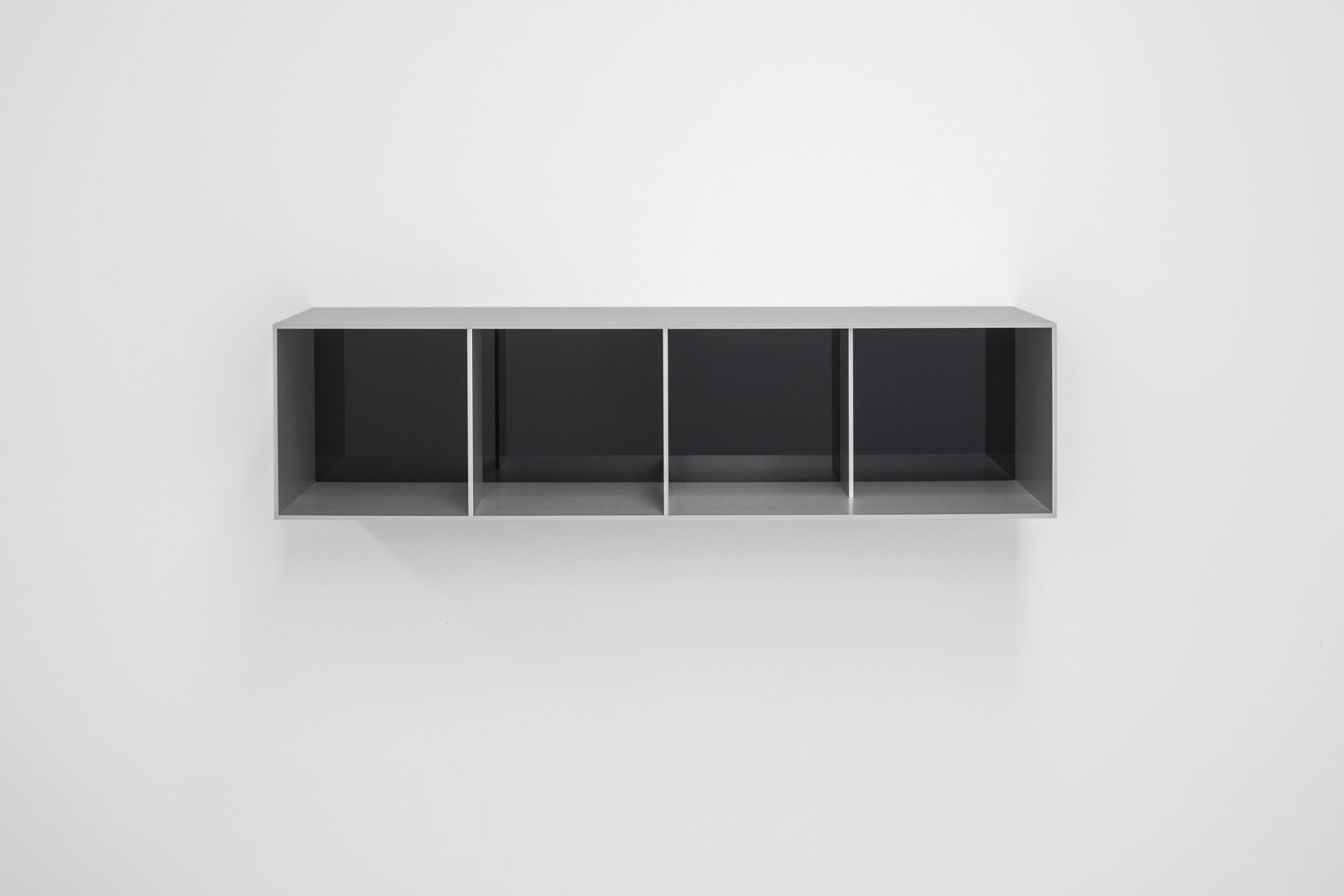Donald Judd installed seven anodized aluminum works at his studio at Las Casas. Each of the works has dimensions that are consistently proportional, either 1:2:1 or, as in this work, 1:4:1. This work has black plexiglass that extends across the back of the piece. There are three evenly spaced dividers that create four ten-inch-wide segments; two dividers are flush with the front of the piece and one runs half the width of the other dividers and is flush with the back of the work.
Judd first used the dimensions of this piece in a work from 1984. It has the same dimensions as untitled,1986, but different interior divisions.
Each work engages space by projecting from the wall, as Judd indicated, “at least as much as its height.”1 In his 1983 essay “Art and Architecture,” Judd wrote, “Proportion is very important to us, both in our minds and lives and as objectified visually, since it is thought and feeling undivided, since it is unity and harmony, easy or difficult, and often peace and quiet. Proportion is specific and identifiable in art and architecture and creates our space and time.”2
